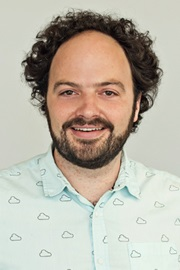
In this interview, AZoM talks to Michael Cianfrocco, Ph.D., a Research Assistant Professor at the University of Michigan, about Cryo-EM images being held in the cloud.
What is your background with electron microscopy? How long have you used EM in your work?
I’ve been doing cryo-EM (cryo-electron microscopy) since 2007 when I started as a graduate student with Eva Nogales at Berkeley. I began by using T12 Spirit and Tecnai F20 S/TEMs with film but eventually graduated to CCD (charge-coupled device) detectors and have just moved forward since then.
So, after graduate school, it just made sense to continue on with electron microscopy?
Yeah, in grad school I mostly just did a lot of cryo-EM grid freezing and imaging analysis. At the end I felt like I needed to pick a biological system to focus on, but I also wanted to keep doing cryo-EM. That’s why I ended up doing a joint postdoc with Samara Reck-Peterson and Andres Leschziner at UC San Diego, since I could keep using electron microscopy.
That’s really when I first bumped into the computing bottlenecks of cryo-EM. Computing access was pretty variable as we were spread between different computing clusters, all of which had their own queuing times. We just didn’t want to be in that situation. That’s when we realized the potential that cloud computing had, and I sort of became the cloud guy since then.
Can you give us the elevator pitch for your group’s current research?
In essence, we study how things move inside of the cell. We want to understand how our motor proteins know when to start, stop and sustain transport along with the cellular skeleton (i.e. microtubules).
What do you see in the future of cryo-EM? What needs to happen for us to get there?
As I’ve done workshops on cryo-EM, I’ve realized that the biggest hurdle for new users is oftentimes the very first steps; they need to know if their protein is behaving properly on the grid, what's actually a particle in the micrograph, if the CTF (contrast transfer function) is good, etc. and all these things could really be compressed down into a single step.
I’ve had people in our facility who would say; I have a protein and a nanodisc, how do I know if the protein is in my nanodisc? Since they’re new to cryo-EM they’re just fiddling with everything and getting the answer might take a week or two. It's going to take them so long, and it should just be something they get in a couple of hours.
So, it feels like, right now, what we need most is to capture all of the expertise in the heads of people like me, who have been doing cryo-EM for a while, and convert that into algorithms for deep learning. It would essentially be a collection of user choices regarding the data and the microscope; which micrographs are good or bad, which particles, which class averages, etc. We just need to make that into somewhat of a black box for new users; then, as they learn, they can start changing more of these parameters with their increased expertise.
Coming from these introductory workshops that I run, this increased accessibility is definitely the thing that’s most critical for us going forward.
Where can we learn more about your workshops, and cloud computing for cryo-EM in general?
For those that want to learn more about the cloud computing tools available for cryoEM, we have recently published a paper in the Journal of Structural Biology on a software platform for submitting cryo-EM jobs directly to Amazon Web Services. (Read: cryoem-cloud-tools: A software platform to deploy and manage cryo-EM jobs in the cloud) Additionally, readers can learn more about the cloud-computing-based workshops we have hosted at the University of Michigan on the U-M website. (Read: Scientists get hands-on experience with cryo-EM data tools at U-M workshop)
More details, in general, can be found on our group website.
About Michael Cianfrocco, Ph.D
 Michael Cianfrocco, Ph.D. is a Research Assistant Professor at the University of Michigan Life Sciences Institute as well as an Assistant Professor at the Department of Biological Chemistry, University of Michigan Medical School. We sat down with him at the 2019 American Crystallography Association Annual Meeting to discuss his background with EM and what he hopes to see in the future of the technique.
Michael Cianfrocco, Ph.D. is a Research Assistant Professor at the University of Michigan Life Sciences Institute as well as an Assistant Professor at the Department of Biological Chemistry, University of Michigan Medical School. We sat down with him at the 2019 American Crystallography Association Annual Meeting to discuss his background with EM and what he hopes to see in the future of the technique.
Disclaimer: The views expressed here are those of the interviewee and do not necessarily represent the views of AZoM.com Limited (T/A) AZoNetwork, the owner and operator of this website. This disclaimer forms part of the Terms and Conditions of use of this website.